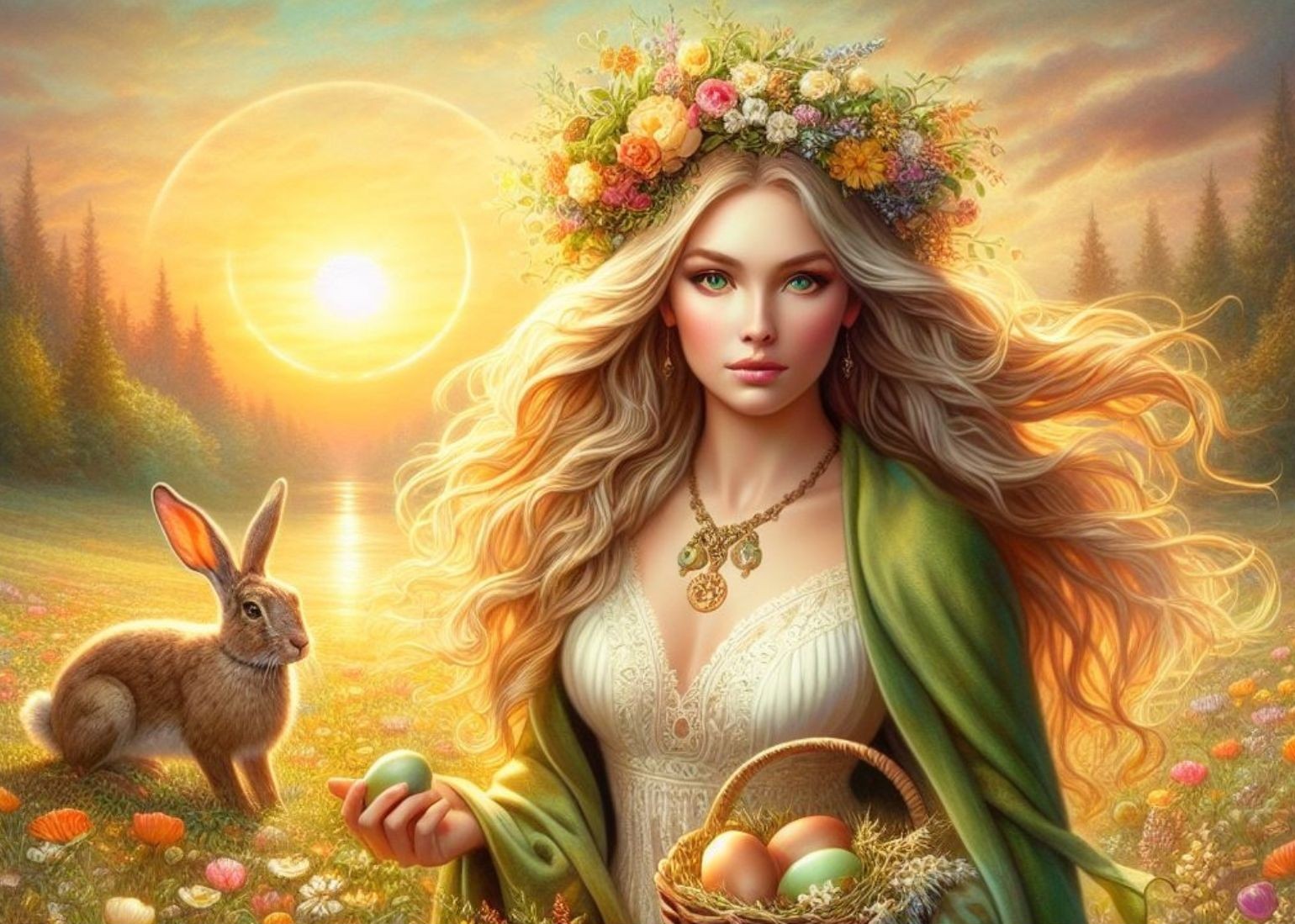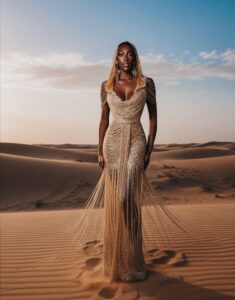Fertility, Femininity & Folklore
By Adaline Sosu
As spring unfurls its pastel petals and the days grow warmer, Easter arrives not only as a celebration of resurrection and new life but, when seen through a modern feminist lens, as a tribute to empowerment, ingenuity, and the joy of reinvention. What if the beloved Easter bunny were more than a cuddly mascot delivering eggs? What if she were a symbol of resilience and determination, an icon for every woman and girl who dares to dream beyond the ordinary? This article delves deep into the intriguing journey of the Easter bunny from ancient fertility traditions to its reinvention as a feminist figure, exploring how playful folklore can inspire us all.
Ancient Roots: From Fertility Rites to Spring Celebrations
Long before chocolate bunnies and egg hunts filled our modern holiday calendars, early European cultures held vibrant celebrations to mark the renewal of nature.
In many pre-Christian societies, the arrival of spring was heralded by rituals devoted to fertility and rebirth. Among these, pagan ceremonies were dedicated to goddesses of the dawn and the earth. One such figure is the enigmatic Eostre, an Anglo‐Saxon goddess whose name appears in the writings of the 8th‑century monk the Venerable Bede. Bede described the month “Eosturmonath” (Eostre’s month) as a time when feasts were held in honor of this goddess, celebrating the energy of spring and the promise of new life.
Although Bede’s account is our only surviving primary source mentioning Eostre, later folklore would attach even more to her legacy. In popular retellings from the 19th century onward, creative minds imagined that Eostre’s sacred animal was a hare, a creature famed for its boundless fertility. One particularly playful legend tells of a goddess who, in a bid to save a shivering bird from the cruel grip of winter, transformed it into a hare. Remarkably, this magical hare continued to lay eggs, ensuring that the signs of new life were not lost even in the cold. While modern scholars debate the historicity of such claims, there’s no question that these myths whether factual or invented resonate with the spirit of renewal that Easter encapsulates.
The Birth of a Feminist Icon: The Country Bunny and the Little Gold Shoes
Fast forward to 1939, when DuBose Heyward published his classic children’s picture book, The Country Bunny and the Little Gold Shoes. Unlike the pristine white, well-to-do bunnies one might imagine, Heyward’s heroine is a plucky, brown mother bunny from the countryside. Framed with humor and heart, the story tells of how this unassuming bunny sets out to prove that she has what it takes to become one of the elite Easter bunnies, even though the prestigious role had long been reserved for her more aristocratic counterparts.
In the narrative, our determined bunny affectionately known as Cottontail, faces harsh rejection from the “big white bunnies” of the city, who dismiss her ideas with snide remarks and a patronizing “go back to the country.” But, as any modern feminist will tell you, rejection is merely a stepping stone, not an endpoint. Cottontail returns to her roots, raises her 21 little bunnies with care and resourcefulness, and eventually triumphs in the Easter bunny job interview. Her success is celebrated as a victory for all women who must balance family life with pursuing their ambitions.
For many, Cottontail symbolizes more than an Easter tradition; she is a gentle reminder that strength comes in many forms. Whether you’re juggling career, motherhood, or both, her tale is a beacon of inspiration, a celebration of resilience, determination, and the unconventional path to success. This subversive retelling resonated with feminists from generation to generation, further fueling discussions about empowerment and self-worth.
A Reinterpretation for Today’s World
In our current era of social media, female empowerment, and vibrant cultural conversations, reimagining the Easter bunny as a symbol of feminine strength and creativity is both timely and refreshing. Modern feminist writers and commentators have embraced the idea of a “feminist bunny” that defies tradition and overcomes societal expectations. The playful imagery of a bunny that “leans in” to her destiny is one that speaks directly to women who have ever had to conquer self-doubt and break free of narrow stereotypes.
Contemporary retellings often highlight two central themes:
- Resilience Against Elitism: Much like Cottontail in Heyward’s story, women are frequently expected to conform to a narrow mold, one that is often defined by privilege, appearance, or limited roles. The image of a hardworking, underdog bunny who wins her place among the “elite” is an allegory for the everyday battles faced by countless women.
- Work-Life Harmony: The narrative celebrates the art of juggling responsibilities without sacrificing one’s dreams.
While motherhood is sometimes depicted as a barrier to professional achievement, the story of the Country Bunny suggests that nurturing and ambition are not mutually exclusive. It’s about reclaiming agency and proving that true competence, be it in raising children or in the professional realm, comes from tenacity and passion.
These modern perspectives are not merely retroactive reinterpretations but are supported by a cultural shift that champions diverse role models and challenges dated ideals. By embracing a narrative that is both girly and playful, yet rich in subtext, we open a door to a celebration that uplifts women in all walks of life.
Connecting Folklore with Modern Feminism
The evolution of the Easter bunny tradition, from its murky origins in pre-Christian fertility rites to a modern emblem of female empowerment is a story of transformation in its own right. Much like the myth in which a goddess transforms a bird into an egg-laying hare, our understanding of cultural symbols can evolve to fit the times.
Scholars note that although the connection between the Easter bunny and the goddess Eostre is not definitively proven by ancient texts, the symbolism is powerful enough to have inspired generations. Today, feminist reinterpretations do not claim to rewrite history but rather to find meaning in the myths that have long been part of our cultural imagination. They offer alternative narratives that speak to a shared sense of resilience and potential for rebirth, an eternal message that is as relevant in boardrooms and living rooms as it is in bedtime stories.
Just as the decorated eggs of Easter symbolize new life and hope, so too does the feminist bunny symbolize the power of transformation. The tradition of egg decorating, rooted in practices dating back centuries, mirrors the act of self-expression. For many women, choosing to embellish the familiar with a burst of color is an act of defiance and artistry, a celebration of the idea that life, in all its multicolored glory, is worth cherishing and reinventing every year.
Beyond the Bunny: Embracing Renewal in All Its Forms
While the bunny is a delightful and endearing character, the broader narrative of Easter is one of transformation and resurgence. The ancient fertility rites that celebrated the season’s renewal have evolved over millennia. Today’s interpretations do not disregard the traditional religious significance of Easter, after all, for many, it remains the commemoration of the Resurrection of Jesus Christ, but they add layers of meaning that honor both spirituality and the continuous quest for empowerment.
In many cultures, the themes of rebirth and renewal naturally align with personal empowerment. Just as the long winter gives way to the exuberant energy of spring, so can personal setbacks transform into moments of profound growth and creativity. This is a story for every woman who has ever turned a challenge into an opportunity, a struggle into a stepping stone.
Imagine the Easter bunny as a playful muse urging us all to embrace change. Picture her not just as a creature delivering eggs, but as a symbol of the potential that lies in each new day, reminding us that with each sunrise, there is a chance to reinvent ourselves, overcome obstacles, and celebrate our unique beauty and strength. It’s an invitation to find joy in the unexpected and to celebrate the resilience that characterizes the journey of womanhood.
Empowering Narratives: The Message We Want to Share
There is immense value in blending lore with contemporary values.
A story that takes something as seemingly lighthearted as the Easter bunny and imbues it with messages of empowerment and perseverance challenges the status quo. It tells a tale of a transformative spirit that is both nurturing and indefatigable, a spirit that can juggle everyday chaos without losing its spark.
By reinterpreting the humble bunny as a feminist icon, we invite our readers to see themselves in every part of the story. Whether they’re mothers re-entering the workforce, young girls daring to dream big, or women striving for balance between personal and professional fulfillment, this narrative affirms that each step forward is a victory. It is a call to “lean in,” to take pride in one’s multifaceted identity, and to transform everyday struggles into moments of triumph.
In an era when messages of self-care, mental resilience, and unapologetic ambition are more important than ever, this reimagined Easter narrative offers a powerful reminder: renewal is not just about seasonal change, it is about the courage to become who you truly want to be.
An Easter Bunny’s Call to Action
As you prepare your Easter egg hunts and decorate your baskets this spring, let’s also celebrate the deeper meanings behind these traditions. Embrace the playful spirit of the bunny who defied expectations. Let the decorated eggs remind you that even the smallest symbols can carry profound messages of rebirth and potential.
We invite you to join us in this celebration of transformation, one that honors ancient traditions while carving out a fresh, empowering narrative for modern women. Whether you see yourself as a resilient nurturer or as a trailblazer paving a new path, this is your season to bloom, reinvent, and shine. This Easter, let every egg, every hop, and every burst of color remind you of your own capacity to grow, evolve, and inspire.
Conclusion: From Ancient Myths to Modern Magic
The story of the Easter bunny is far more than a whimsical fairy tale. It is a multi-layered narrative, born out of ancient rituals celebrating fertility and the inevitable return of life, and reimagined in a modern light as a symbol of female empowerment. In the playful pages of The Country Bunny and the Little Gold Shoes, we find a heroine whose journey mirrors the real-life struggles and triumphs of women everywhere. Her story is a testament to the belief that no obstacle is too great when met with determination and heart.
This feature is a celebration of renewal in every sense. It reminds us that while traditions may evolve, the underlying truths remain constant: life is about transformation, creativity, and the power of the human spirit, especially when that spirit is as bold, resourceful, and unapologetically feminine as ours.
As Easter approaches, let us all find inspiration in the rebirth of nature and in our own ability to reinvigorate our lives. Let the timeless symbols of eggs and bunnies guide us toward a brighter, bolder future, where every woman can celebrate her strength, creativity, and unyielding resilience.







